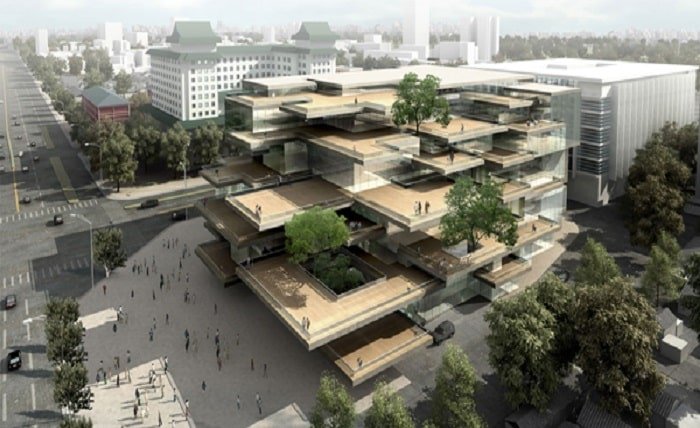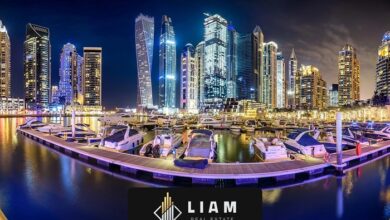From Concrete to Balustrades: The New Aesthetic of Urban Terraces and Public Spaces

Urban design has always reflected the social values and architectural style of its time. Concrete dominated the vocabulary of civic spaces for generations. It represented utility, strength, economy. From plaza benches to amphitheater steps, concrete was the city’s palette. But as the city grew and tastes shifted, so too has our vision of what public spaces—and their edge terraces—ought to be and feel like.
Modern urban terraces are no longer just blotches of practical concrete sliced between buildings. They’ve become intended places—places to hang out, socialize, take a break, and reflect. And thus, there is a new vocabulary of aesthetics, one where tough infrastructure is combined with high-level materials, architectural decoration, and man’s desire for comfort and connection.
A Shift Toward Multi-Sensory Urban Environments
Modern public spaces are moving away from minimalism toward a more multisensory, layered experience. Terraces and plazas are now designed not just to serve but to inspire. Instead of feeling like pass-through zones, these spaces are designed to bring people together—to make them stop, to make them gather, to linger.
This shift has reached everything, from materials to spatial layout. Warm woods, verdant landscaping, water features, and thoughtfully chosen textures are replacing flat gray surfaces. Terraces that were originally designed as a quick pit stop now are being conceived with moments in mind—moments of rest, of connection, of observing. Whether a rooftop with a skyline view or an intimate public courtyard, the goal is to make people feel welcomed, not just included.
Architectural Details as Social Infrastructure
In some ways the most dramatic feature of this new movement is the return of ornament and building detail—especially in the form of railings, balustrades, and stairwork. Previously purely utilitarian components, these are now being thought about as central design components that play a part in defining the character of a room.
Balustrades are no longer just about safety. They are adding rhythm, line, and depth to a terrace. Their appearance—whether spare and elegant or sculptural and bold—grabs the spotlight and sets the tone for the rest of the space. On urban sites where square footage is limited, railings often double as visual walls that define gathering areas, hide planters, or form hidden seating edges. Their ability to define spatial experience cannot be overlooked.
Similarly, staircases are no longer hidden or subsidiary—they’re being featured as architectural statements. The contemporary staircase does more than just connect levels. It’s a sculptural focal point, anchoring the terrace in its city environment. Whichever material—corten steel, polished concrete, or painted aluminum—contemporary stairs are meant to marry function with form, delivering visual beauty at every step.
In this context, selecting the right stair solutions becomes a matter of design integrity. Companies like SI Handrails are helping architects, landscape designers, and city planners elevate these everyday features into iconic visual elements. From sleek handrails to customized balustrades, these products do more than meet safety codes—they enhance the experience of place itself.
Safety Without Compromise
Of course, public balconies remain under strict controls for safety and accessibility. But now, safety doesn’t have to be at the expense of beauty. Surely the most exciting innovation in contemporary urban design is the incorporation of safety features into attractive design.
Railings and balustrades, for instance, are now being produced in a variety of materials and finishes to match the ambiance of the space—without compromising on code. For heavy-use areas, metal designs are powder-coated for wear, while for hospitality terraces, minimal rail profiles blend perfectly with furniture and lighting schemes.
Glass, cable rail, and perforated metal infill are used creatively to enhance transparency and visibility while still functioning as required safety roles. These features have a profound effect on how people feel and connect with a place. Instead of being encased, they are steered. Instead of feeling reminded of limits, they perceive purpose and consideration.
The Human Scale of Urban Comfort
Central to this design shift is a focus on human experience. Urban balconies are no longer built based on how many people they can hold—but based on how they can make people feel when they’re there.
Residential apartment balconies and terraces, for instance, are designed with semi-private spaces. Railings therein are designed not just for privacy and security but also to add character to the building facade. Seating alcoves, shade canopies, and gentle partitions formed by balustrades in shared spaces create the space a sense of proportion and closeness even in urban settings.
They are also paying attention to haptic materials, soft curves, and even to acoustics. A smooth and solid-to-touch railing, or steps that dampen sound more than they reflect it back in a jarring echo, can completely change the way people inhabit a space. Emotional response to thoughtful design—however subtle—has become an essential measure of success.
Looking Ahead: Design as Dialogue
What’s taking place on our city roofs is all part of a bigger movement toward cities that are more responsive, more human. Humans don’t want to be stuck in concrete tunnels or built-in rooftops anymore. They want spaces that engage with them, that offer something in return—be it a view, a moment of peace, or a chance encounter with an unfamiliar person.
The beauty of this movement is that it does not take enormous budgets or high-tech bling. It starts with care in the details. With seeing a railing not as a code issue but as an opportunity. With recognizing that even an unadorned stairway can contribute to the writing of a building’s story.
As cities continue to spread upwards and density becomes the new norm, rooftops and terraces will be more important than ever. These small raised pockets are our window to the sky, to fresh air, and to each other. They must be treated better than slabs of concrete and boring barriers. They must be treated to beauty, meaning, and design that turns the mundane into the extraordinary.




